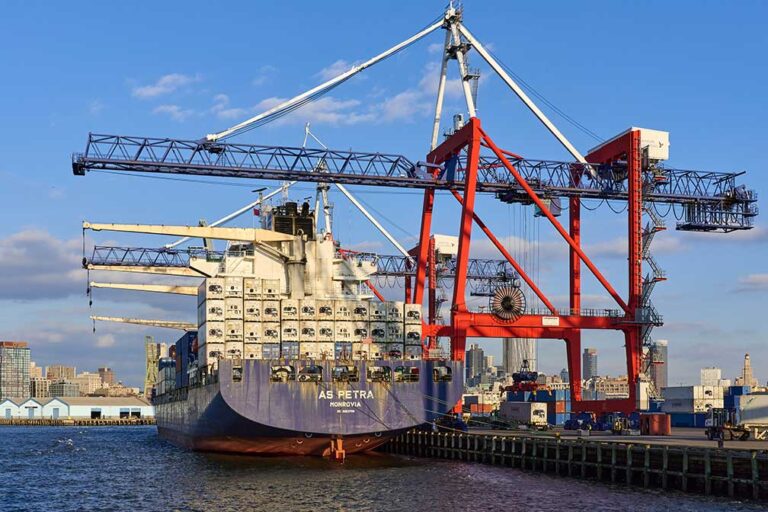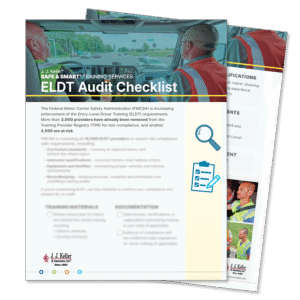DAT’s Truckload Volume Index (TVI) for August rose month over month for the dry van, refrigerated and flatbed segments tracked. DAT reported an increase of 2.8% from July for dry van, 4.3% for refrigerated and 0.3% for flatbed.
Also in August, however, national average spot freight rates fell for all three segments, with dry van falling by a nickel a mile, refrigerated by four cents and flatbed by seven cents.
The news wasn’t all bad, though. DAT’s TVI showed a 6.3% improvement over August 2023, and the refrigerated TVI was up 17.6%.
“Linehaul rates were year-over-year positive for the first time since March 2022, a trend that should continue into the fall shipping season,” said Ken Adamo, chief of analytics at DAT. “However, year-over-year comparisons are little consolation for truckers looking for better pricing now.”
Increasing Costs
Because of inflation, truckers are already contending with higher prices for everything they purchase — with the exception of fuel — but fuel is often covered by a surcharge and isn’t included in the DAT rate calculations.
The recent half-percent rate cut by the Federal Reserve isn’t likely to show up on credit card interest for months, if at all, and existing truck loans with fixed interest rates won’t be impacted anyway.
A 2024 update on the Operational Costs of Trucking, published in June by the American Transportation Research Institute (ATRI), reported that trucking costs, minus fuel, rose by 6.6% in 2023 compared to 2022 costs.
Insurance premiums and truck and trailer payments are growing at the fastest rates: From 2022 to 2023, insurance costs rose 12.5%, while truck and trailer payments rose 8.8%.
It’s important to note that those increases added to even higher increases the year before. In 2022, for example, truck and trailer payments rose 18.6% and then rose another 8.8% in 2023. Respondents to another ATRI survey reported that those costs continued to rise in the early months of 2024.
ATRI reported that driver wages rose by 7.6% in the same period, but truck owners are finding it difficult to increase their take-home cash after paying the increased business costs. Those that are leased to carriers may be seeing a higher per-mile compensation.
The Seasonal Factor
A part of the rate problem in August is seasonal.
Harvests of vegetables and early fruits have mostly been completed and shipped, leaving refrigerated trucks to compete for dry van loads. Grain harvests are beginning, but these products are mostly handled by hopper-bottom or dump equipment.
In short, August is typically a slow shipping month, which translates to lower shipping rates.
The Cass Freight Index for Shipments reported a 1.0% increase in shipments, but a decrease from last August of 1.9% following a 1.1% decline in July.
“These were the smallest declines in 18 months as goods demand continues to grow slowly — and slowing capacity additions reduce the pressure on for-hire shipments,” wrote Tim Denoyer, vice president and senior analyst for ACT Research, who administers the Cass report.
The Cass report is compiled using billing data from its clients and includes data from trucking, rail, ship, air and pipeline transportation segments, with about 75% coming from trucking. The data skews towards contract freight rates rather than the spot market.
Politics Play a Role
There’s no denying that this year’s presidential election, along with numerous other races at both the federal and state levels, have created uncertainty in the trucking industry.
“We generally strive to base our outlook on industry economics, rather than politics … but no strategy worth its salt can avoid election implications right now,” Denoyer wrote.
Those implications, according to Denoyer, include elevated near-term uncertainty and slowing industrial activity as normal short-term features of presidential elections.
“Almost regardless of the outcome, some combination of near-term softness and post-election relief recovery in freight demand is thus likely,” he said.
Available Freight
The American Trucking Associations (ATA) weighed in with its Truck Tonnage Index, which showed an increase of 1.8% in available freight in August. The ATA index is comprised of survey data received from its membership and leans heavily to contract freight.
“August tonnage levels rose to the highest level since February 2023,” said Bob Costello, chief economist for ATA.
“Not only does the latest robust gain show freight levels are coming off the bottom, but so does the sequential pattern over the last eight months,” he said. “Starting earlier this year, every time tonnage falls, it is higher than the previous low. For me, this month-to-month pattern is more important than looking at the year-over-year percent changes since we are at an inflection point in the freight market.”
Possible Port Strike
The Motive Monthly Report for September showed a 7.7% increase during August in truck visits to warehouses of the top 50 U.S. retailers. The report noted an increase in inventory-to sales ratios, indicating that retailers are increasing their stocks ahead of the holiday season.
There’s another reason, however.
A labor agreement between the International Longshoremen Association (ILA) and port owners is due to expire, and a deadline of Oct. 1 has been set to reach a new agreement.
The ILA handles 43% of all U.S. imports, moving through ports on the East Coast and the Gulf of Mexico. A strike could impact consumer goods, causing shortages and price increases. Shipping costs, already on the rise, will be pushed further upward, both by shortages caused by a strike and by higher labor costs once agreement is reached.
With the election so close, President Biden isn’t likely to become involved in the negotiations unless conditions become severe.
A strong holiday retail season would be a badly needed boon to the trucking industry, but potential strikes at Eastern ports could remove a lot of freight from the market. In the meantime, both presidential candidates have discussed import tariffs that could dampen trade.
Per Diem Boost
In other news, per diem rates are increasing from $69 to $80 per day, effective Oct. 1. This 16% increase in per diem amounts to another $21 per day on the road to deduct from the income tax bill. This is especially important for owner-operators who pay self-employment tax, as it can increase tax deductions as much as $3,000 to $4,000 per year. That’s not much difference to struggling trucking businesses … but every little bit helps.
In the meantime, truckers are still waiting for conditions to get better.
Cliff Abbott is an experienced commercial vehicle driver and owner-operator who still holds a CDL in his home state of Alabama. In nearly 40 years in trucking, he’s been an instructor and trainer and has managed safety and recruiting operations for several carriers. Having never lost his love of the road, Cliff has written a book and hundreds of songs and has been writing for The Trucker for more than a decade.














